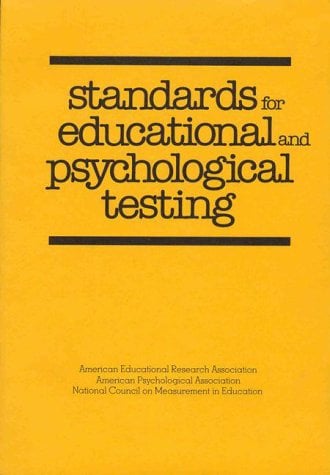Ψlogical
Testing
Chapter 1…
…Introducktion
…Introducktion
Office keeping 💼
- Class Structure:
- Read chapters prior to class
- Bring questions to me
(and broader class)
- Materials:
- Syllabus
- Textbook*
- Slides

![]()
Definitions:
- test – measurement device
- true test – exam (answers can be scored correct/ incorrect)
- item – stimulus to which person responds
- Ψ test – measurement device for human characteristics
- trait – relatively enduring Ψ characteristic
- scale – summary score (across items)
- norm – “normative distribution” against which scores are interpreted
Test Features
- tests involve behavioral samples
- behavioral sampling is systematic
- purpose is to detect psychological differences
- book uses term “test” when more often actually referring to broader term, “Measure” 1

Untangle the Jangle I
Untangle the Jangle II
Untangle the Jangle III
Consequences of testing
High Stakes (🥩🥩🥩🥩🥩)
- Adoption
- Admission
- Hiring
One-shot
Low Stakes (🥩)
- Dating
- Self-awareness
- Classroom
Retakes permitted
Terminology Recap
History of Ψ testing
Darwin & Individual Differences
- evolutionary theory partially informed by individual differences within species
- \(\frac{1}{2}\) cousins with Francis Galton (dob 1822)
- Hyper-focused on individual differences
- Controversial primarily for eugenics
- Galton Institute rebranded in 2021

Psychophysics
- focused on measurement of human sensation/ perception
- concept of threshold important (minimum quantity needed to elicit reaction)
- considered the genesis of
experimental psychology- testing should be treated like an experiment
Public need
- French government wanted to identify mentally disadvantaged
- Alfred Binet & Theodore Simon developed a test to help (1905)
- utilized
standardizationsample (aka norm) - proposed IQ as metric (1908)
- today classified as “intelligence” test
- Terman revised as “Stanford-Binet” (1916)
- utilized

World War I
- Yerkes and Terman recruited to help US army process recruits
- developed intelligence test, but intelligent individuals were failing
- group testing developed as administration option
- Army Alpha and Army Beta
- Most believe Army didn’t use, but others took notice…

Interwar period (1918–1941)
- Standardized “achievement” tests proliferate (education and industry)
- easy to administer
- first Wechsler test published (1939)
- several subscales (not just “overall IQ”)
- Personality “tests” also briefly become popular
- Woodworth Personal Data Sheet (1917)

World War II & after
- Testing now more well established
- Army recruits and uses tests
- Clinical and Industrial sub-disciplines develop
- both rely on testing to inform decisions
- Standards published (pre-1st edition)

Importance of Individual Differences
- Measurement depends on the ability to detect and quantify psychological differences
- Do differences in test scores truly reflect psychological differences?
- So critically important that some Psychologists (including me) grossly define Psychology as the “study of individual differences”

Importance of Individual Differences (II)
Testing is the most commonly used method for psychologists to measure inter- and intra-individual differences:
- Inter: Homer smarter than Bart
- Intra: Persephone nicer now than she used to be


